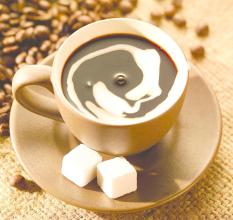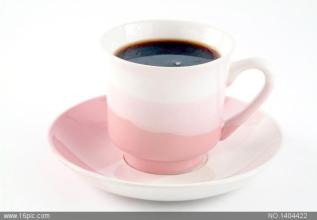Introduction to the Flavor and Taste Manor of Fine Coffee beans in Ethiopia
Then there is the washing of coffee beans. First take a bowl of light green coffee beans, wash them in a small basket, just like we wash rice, wash them, take them out and spread them flat on a slightly concave iron plate, then put the iron plate on a small stove fueled by wood or charcoal and start baking. During the baking process, the hostess fiddled with a curved iron bar from time to time. As the temperature increased, the color of the coffee beans changed from light green to golden yellow, and the evaporated coffee beans began to crack and give off a faint fragrance, just as we usually smell in cafes, but much lighter. After roasting, the coffee beans turn dark brown and the aroma becomes stronger.
After baking, the next step is to crush the coffee beans. The hostess withdrew the iron plate to the outside of the stove, cooled slightly, poured the roasted coffee beans into an iron mortar about 30 centimeters high, similar to our processed traditional Chinese medicine, and hammered the beans into coffee powder with an iron pestle. This action is not as simple as it seems. One hand should be held on the iron mortar below, and the other hand should be raised high, because only by holding it high can one be able to do so. To force the iron pestle accurately into the small mouth of the iron mortar, inexperienced people will only hit their own hands. I have also asked curiously, why not grind coffee in an iron mill or a coffee machine? The host told me that if grinding with a machine, the high-speed friction between coffee beans and metal brings a lot of impurities on the iron, which will affect the pure flavor of the coffee after processing.
After the coffee powder is made, the hostess carries the clay plate containing the coffee powder and sends it to the guests attending the ceremony in turn, so that everyone can smell the incense. Next, pour the Chung-ho coffee powder into a clay high-necked coffee pot, add water and boil it on a charcoal stove. on the high neck of the coffee pot, there is a special cork shaped like a wooden top played by children, but a bit like a shoddy one. The function of cork is to keep warm, because the local elevation is more than 2500 meters, the boiling temperature of coffee liquid is low, and the kettle is open, which is not conducive to keeping the temperature; second, it is boiling coffee.
Steam can be easily flushed out of the cracks in the cork. Since they are all made of natural materials, the coffee brewed is naturally more fragrant.
While brewing coffee, there is a porcelain fumigation on the side, which contains a white powder. Only after inquiry did I know that this is a material called mo4 medicine in a traditional Chinese medicine store. After the porcelain fumigation is heated, there is a curl of aroma coming out, which is mixed with the strong aroma of the coffee pot and spreads in the room, creating a unique atmosphere. The locals proudly told me that only coffee drunk in this atmosphere can be regarded as authentic Ethiopian coffee.
The coffee (which is called "Buna" in the local official Amharic language) is made, and before tasting the coffee, there is a snack. The hostess brings a plate of refreshments (usually bread or cake) and a dessert knife to the guests, who cut the refreshments, which is a bit like slicing a birthday cake. This may be what we call coffee companions today.
When the guests all picked up the refreshments, the highlight of the coffee ceremony began. The hostess poured the rich coffee liquid from the coffee pot into a small ceramic or magnetic coffee cup like us drinking Kungfu Tea on the small table, and gave it to the guests one by one on a tray, with a small clay jar containing granulated sugar. Guests can take it as they like.
Local people like to add a lot of sugar to their coffee, perhaps because their coffee is particularly rich and bitter.
The first coffee is called "Abu" in Amharic, and it has a strong flavor. Although there is only a small cup, it makes people excited after drinking it, and it feels completely different from the instant coffee drunk in China. In contrast, instant coffee is lighter, like a cup of tea, while "Abramovich" is thicker, that is, a cup of wine. This is a drink that keeps the aroma of coffee in the mouth for a long time.
After the first course, the hostess added some more water to the pot and continued to boil. Soon the second course of coffee, "Tona", will be available. "Tona" tastes a little lighter, but more mellow. I have a good feeling about this. Because it is not too bitter, does not need to add a lot of sugar, but also rich in the original taste of coffee, can be tasted carefully.
The third course of coffee is called "Boca", which is much lighter by comparison and is coming to an end.
Tasting authentic Ethiopian coffee around the stove, primitive, simple and leisurely, elegant coexistence, coupled with the host's pious performance and warm reception, to paraphrase a popular slogan, this is "delicious". The weekly coffee ceremony made me very interested in the local coffee ceremony. Before returning home, the hostess must give me a full set of brewing.
Coffee utensils and, of course, authentic Ethiopian Arabica coffee beans. I really like the coffee pot and porcelain fumigation made of simple clay pottery, and when choosing coffee cups, although I prefer the black local clay cups, she insists on giving me fine porcelain cups. She says this is better, smoother, durable and more valuable for artistic appreciation.

Important Notice :
前街咖啡 FrontStreet Coffee has moved to new addredd:
FrontStreet Coffee Address: 315,Donghua East Road,GuangZhou
Tel:020 38364473
- Prev

Introduction to the Manor of the Origin of Panamanian Rosa Coffee Flavor
There should be no objection to describe Panamanian coffee as unique. This small country has the most competitive coffee farm in the world and the highest average transaction price. The important reason for the unique quality of Panamanian coffee is its microclimate. Panama borders Costa Rica and Colombia, and the environment from east to west allows cold air to flow through the Central Mountains
- Next

Introduction to the Flavor and taste of Jamaican Fine Coffee Manor
When it comes to Jamaica, everyone's eyes lit up immediately because it produced the best Jamaican Blue Mountain Coffee (Jamaica Blue Mountain) in the world. We absolutely believe that Jamaica Blue Mountain Coffee is the best coffee, its acid, sugar, alcohol and bitterness are well balanced, fragrant and smooth to drink, but its price is too high, although it is worth a try, there is no need to do so.
Related
- Detailed explanation of Jadeite planting Land in Panamanian Jadeite Manor introduction to the grading system of Jadeite competitive bidding, Red bid, Green bid and Rose Summer
- Story of Coffee planting in Brenka region of Costa Rica Stonehenge Manor anaerobic heavy honey treatment of flavor mouth
- What's on the barrel of Blue Mountain Coffee beans?
- Can American coffee also pull flowers? How to use hot American style to pull out a good-looking pattern?
- Can you make a cold extract with coffee beans? What is the right proportion for cold-extracted coffee formula?
- Indonesian PWN Gold Mandrine Coffee Origin Features Flavor How to Chong? Mandolin coffee is American.
- A brief introduction to the flavor characteristics of Brazilian yellow bourbon coffee beans
- What is the effect of different water quality on the flavor of cold-extracted coffee? What kind of water is best for brewing coffee?
- Why do you think of Rose Summer whenever you mention Panamanian coffee?
- Introduction to the characteristics of authentic blue mountain coffee bean producing areas? What is the CIB Coffee Authority in Jamaica?

